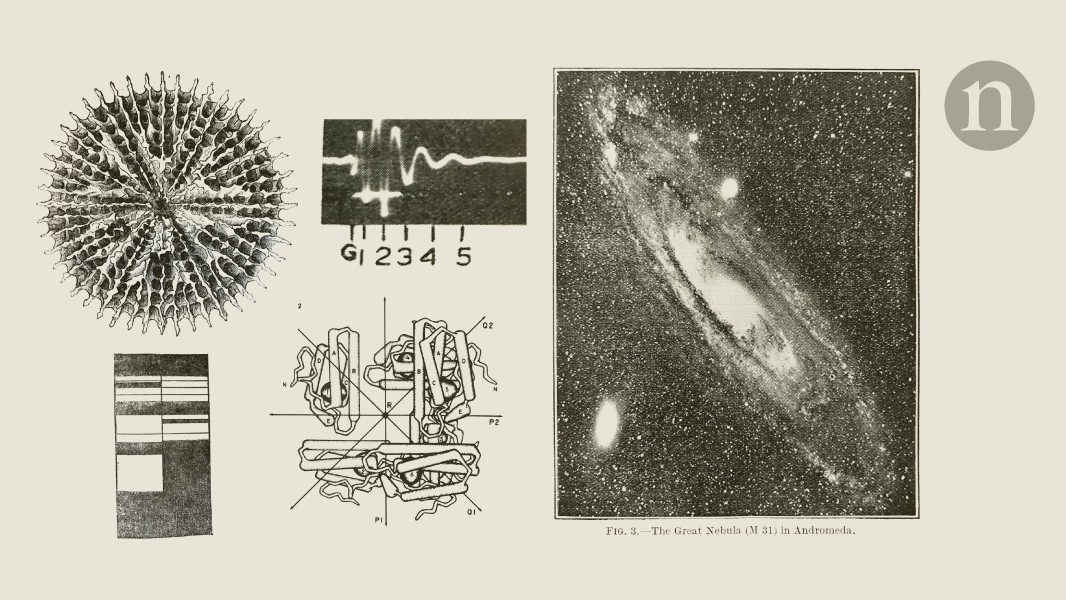www.archdaily.com
Formal and Material Experimentation: Key Lessons from Modernist Architecture PioneersSave this picture!Brasilia construction . Image Alexander EisenschmidtWars, decolonization, economic crises, civil movements, and industrial-technological revolutions: the 20th century was a period of radical and far-reaching transformations. These upheavals reshaped societies and redefined how people expressed their evolving aspirations, with architecture leading the way. Machines and industrialization promised technological progress and modernization, advocating for a clean break from the ornamented, historically rooted styles of the past while embracing a vision focused on functionality, efficiency, and innovation. This shift, embodied by modernism, introduced new concepts, methods, and material usesall shaped through experimentation.Driven by the acceleration and connectivity derived from the Industrial Revolution, the movement gave way to a generational rupture that reached a global convergence, bringing dissertations and approaches that, for the first time, developed almost in parallel in different parts of the world. The movement started in Europe but quickly spread to other continents. While the basic principles of modernism were the same, different regions developed their own discussions based on local culture, context, and society.Save this picture! Architecture should be an expression of our times, not a plagiarism of past cultures. -Le Corbusier This process evidenced that, although experimentation was inherent to modernism, local particularities played a determining role in its evolution, providing new opportunities and challenges that enriched the transformation of the movement. Key figures such as Eileen Gray, Oscar Niemeyer, Emilio Duhart, Amancio Williams, Teodoro Gonzlez de Len, and Balkrishna Doshi, among others, were fundamental in this period. Many of them, closely connected to Le Corbusier, exchanged ideas and perspectives with him, shaping their works to reflect the universal principles of modernism while incorporating processes, materials, and lessons drawn from their specific contexts and personal visions.Save this picture!Form, Color, Furniture, Materials, and Structure as Part of a WholeWe shall begin by talking about Le Corbusier, who, like other figures who succeeded him, used steel, concrete, and glass as fundamental materials in his work. Beyond their structural or physical roles, these materials embodied the logic of construction, becoming mediums to demonstrate efficiency while addressing the five points of architecture he conceived. Steel, reserved primarily for infrastructure, began to shape smaller-scale buildings, offering lightness, wide spans, and structural stability.By eliminating structural constraints, reinforced concrete enabled the creation of innovative, fluid forms. At the same time, glass, with its flexibility, complemented the technical potential offered by concrete and steel. Together, this triad became emblematic of the core principles of modern architecture. Yet, the experiential quality of space remained equally important. This focus led to the unfolding of Le Corbusier's color theory and Eileen Gray's distinctive approach to modernist architecture and interior design in the E1027 Villa, where she embraced contemporary principles while reinterpreting them through her unique use of furniture and materials.Save this picture!Eileen Gray explored the development of various armchair and table structures using chromed stainless steel, with the E1027 Side Table being one of her most famous designs. This piece achieved an aesthetic that is now considered classic, yet was revolutionary for its time. Her design stands out for the contrast between the shades of the furniture, the wood accents that add warmth, and the incorporation of textiles, such as rugs, which enrich the sensory experience of her spaces. This integration of materials reflected a vision where architecture and furniturethough influenced by the machinist principles of the modern movementwere scaled to suit the human experience. Gray broke with convention, redefining the relationship between design and livability by conceiving functional and emotionally resonant spaces.Save this picture! A house is not a machine to live in. It is the shell of man, his extension, his release, his spiritual emanation. -Eileen Gray Another outstanding figure who explored the limits of modernism was Oscar Niemeyer. He embraced a more expressive approach, in stark contrast to the geometric rigidity that defined many of his contemporaries, including fellow countryman Lucio Costa. Although reinforced concrete became his most important resource, he knew how to use its malleability to create forms that evoked a more fluid and sculptural aesthetic. His approach, deeply influenced by a Latin American vision, sought to "Brazilianize" modernism, endowing it with a character that dialogued with cultural identity. Through curves, he expressed the sinuosity of the landscape and nature.One of the most innovative aspects of the Brazilian architect's process was his close collaboration with engineer and poet Joaquim Cardozo, which enabled the calculation of complex structures with remarkable technical precision like the Cathedral of Brasilia. This synergy between architectural design and engineering led to construction methods that fulfilled a structural function and explored the potential of reinforced concrete to create dynamic compositions. The key lesson Niemeyer left us is the balance between material, structure, and form, which, along with the building's identity, are seamlessly integrated into a cohesive process.Save this picture! My work is not about 'form follows function' but 'form follows beauty' or, even better, 'form follows feminine'. -Oscar Niemeyer Comparing the approaches of the three architects reveals that Gray's and Niemeyer's visions were not counter to Le Corbusier's ideas, but an evolution in architectural thinking. Gray's functional approach and Niemeyer's expressive vision expanded the possibilities of materials and architectural forms. Both created a language that conceived the building as an integrated whole, transcending the limits of "traditional" modernism.Climate, Contextual, and Cultural Integration as the "Unseen" Thread that Defines IdentityLe Corbusier himself once acknowledged, when referring to the challenges of building Chandigarh, that he had to make a pact with nature, taking into account the extreme climatic conditions of India, such as the scorching sun, the strength of the monsoon and the hot winds of the region. What better example of modernism and contextual integration than India? And what better reference than Balkrishna Doshi? Although he was one of Le Corbusier's most prominent disciples, Doshi developed an architectural language of his own, adapted to a newly independent country but with a deep cultural tradition. For him, architecture was not merely a means of construction, but an extension of life. A clear embodiment of this philosophy is his studio, Sangath.Save this picture!In his projects and studio, vegetation is essential, profoundly connecting the buildings with their surroundings. Unlike the early manifestations of modernism, which tended to isolate themselves or appear alien to the natural context, in Doshi's work the buildings integrate harmoniously with the landscape. In Sangath, the architecture is characterized by its horizontality, with each building interconnected, evoking the form of a cave. The interior spaces, sunken and protected by clay, are sheltered from the sun's heat by grassy mounds and the reflective white porcelain mosaic that covers each vault. Sangath stands out not only for its links to nature but also for its corridors and courtyards, open spaces that serve as meeting areas, and integration of architecture with the communal life of Indian culture. Although modernism was historically associated with technology and progress, for Doshi true advancement could not be achieved without deep cultural rootedness and the use of local materials. Instead of proposing a universal vision of modernism, his work presents a localized interpretation of architecture as a celebration.Save this picture! Design is nothing but a humble understanding of materials, a natural instinct for solutions, and respect for nature -B.V. Doshi Similar cases are found in the work of Teodoro Gonzlez de Len and Emilio Duhart, both alumni of Le Corbusier, who, in the mid-20th century, were part of a generation of Latin American architects whose vision of modernism intersected with their local context. Interestingly, both experimented with new takes on the clean white concrete that marked the early works of the movement, but with more robust characteristics. Although both emphasize horizontality and monumentality, the Mexican architect's work stands out for its unconventional and somewhat contradictory materiality. He experimented with a mix of concrete and white marble grain as aggregate, which, once chiseled, reveals a new texture while also correcting imperfections from the local workers' construction techniques. Modernism now incorporated artisanal processes.On the other hand, the ECLAC Building in Chile, designed by Duhart, is situated along the banks of the Mapocho River. This location directly influences the material expression of the building, which, although it presents a robust aesthetic, establishes a connection with the adjacent body of water through the use of local materials, such as sand and "ripio" (gravel) from the river. This choice highlights the relationship between the structure and its surroundings. Some reinforced concrete walls include engraved inscriptions that promote dialogue with its cultural and natural context. These engravings soften the hardness of the concrete, introducing a symbolic dimension that had not been seen in the works of his contemporaries and predecessors, underlining the building's link to the identity of the place.Save this picture!Save this picture! The present is what an architect should be most interested in. We make the future by confronting the present. -Teodoro Gonzlez de Len The examples seem endless, highlighting the vastness and diversity of this movement, where each proponent unlocked new avenues for exploration. Every architect, shaped by their distinct ideology, culture, and context, brought their interpretation. Was this an unexpected outcome for modernism? This break with the past may have aimed to move away from ornate, dominant forms, offering instead a much-needed blank canvas that would allow those inspired by this transformation to develop and experiment freely, without constraints. Getting rid of the inertia, architects found themselves in uncharted territory, where the rules were no longer dictated by precedents but by innovation. This newfound freedom redefined the relationship between form and function and sparked a revolution in how spaces were conceivedstripped to their essence, but abundant with potential for reinvention and experimentation.Save this picture!This article is part of the ArchDaily Topics: 100 Years of Modernism. Every month we explore a topic in-depth through articles, interviews, news, and architecture projects. We invite you to learn more about our ArchDaily Topics. And, as always, at ArchDaily we welcome the contributions of our readers; if you want to submit an article or project, contact us.Image gallerySee allShow lessAbout this authorEnrique TovarAuthorCite: Enrique Tovar. "Formal and Material Experimentation: Key Lessons from Modernist Architecture Pioneers" 11 Feb 2025. ArchDaily. Accessed . <https://www.archdaily.com/1026242/formal-and-material-experimentation-key-lessons-from-modernist-architecture-pioneers&gt ISSN 0719-8884Save!ArchDaily?You've started following your first account!Did you know?You'll now receive updates based on what you follow! Personalize your stream and start following your favorite authors, offices and users.Go to my stream











